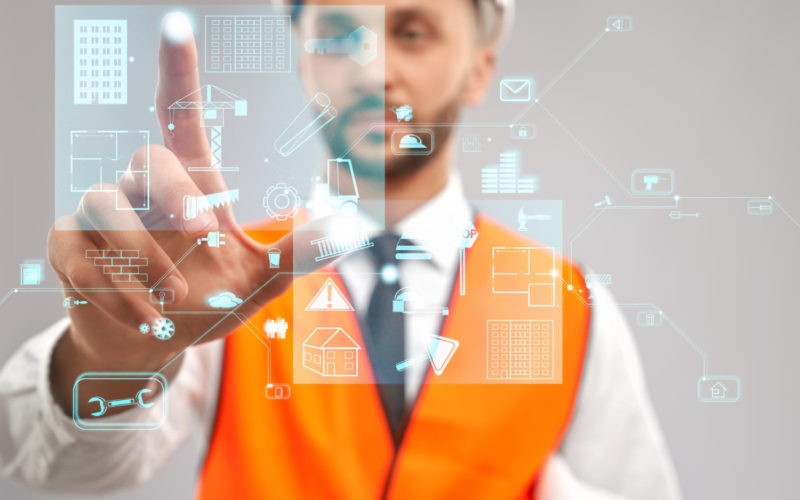Mention workplace safety and most people will think of high-viz vests, protective goggles, and masks preventing workers from being exposed to toxic fumes. Workplace safety training and warning signs posted throughout a facility may also come to mind. These systems and devices have been used for decades to keep workers healthy and prevent accidents and injuries, and they are certainly efficient.
Despite that, workers are still being injured or become ill at work because of standards violations or less-than-optimal use of safety equipment, among other reasons. Modern workplace safety encompasses more than signage and the likes of protective goggles. To deliver the highest levels of workplace safety for their teams, companies need to look toward emerging technologies. Here is a closer look at leading technologies safety-conscious employers need to consider now.
Implementing Modern Data-Driven Technology
Advancements in technology have long driven advancements in workplace safety. Take manufacturing robots, for example. Not only have these devices taken over repetitive, monotonous tasks. Companies have also been able to use robots, rather than human workers, for especially dangerous tasks.
Drones are a great example. Construction sites no longer have to risk people trying to reach dangerous locations. Instead, companies can utilize drones to check difficult-to-reach areas and inspect surfaces with the help of drones and their non-destructive testing capabilities.
Wearable technologies are another example of data-driven technologies that can improve health and safety in a variety of workplaces. Some of these devices track a worker’s heart rate and respiration, allowing them to alert the wearer to stress or fatigue, which could put them at a greater risk of injury.
Other wearables monitor environmental factors such as air quality or potentially harmful levels of dust that could lead to respiratory problems. One of the latest additions to the selection of commonly used wearable workplace safety devices is panic buttons. Most of us will have seen one or more movies where a bank teller reaches under their desk to alert the police of an ongoing robbery.
To some degree, wireless panic buttons still follow a similar approach. However, rather than being permanently installed and wired to the nearest police station, current panic buttons tend to be wearable or portable. Their signals are transmitted wirelessly, and they are most commonly used in the hospitality and healthcare industries.
Making Use of Safety Apps
Remember Apple’s ubiquitous phrase “There’s an app for that”? When it comes to workplace safety, employers and workers can choose between various options depending on their smartphones. Safety apps are among the most cost-effective tools available to companies in the United States and beyond. Many are accessible free of charge and allow employees to evaluate and monitor working conditions in their location.
For example, assume your company is assigning a team to work in a high location that is exposed to strong wind. Rather than relying on a weather forecast, a safety app can continuously assess the conditions on the ground and warn workers when it becomes too dangerous to carry on. Safety apps can also remind teams of best practices for ladder safety, such as safely utilizing a pit access ladder in environments requiring workers to access confined spaces. These apps help ensure that teams follow safety protocols to minimize accidents.
Depending on your industry, you may have access to more advanced and specific safety apps that help your business remain compliant with workplace safety regulations. These can vary widely between industries, and they are updated regularly. With an industry-specific app, businesses can avoid falling behind or missing out on critical new information.
Bringing Virtual Reality into the Workplace
What does virtual reality (VR) have to do with workplace safety? If you believe that VR is something reserved for devoted gamers, you are actually not that far off the mark. Workplace safety providers are starting to leverage the power of this technology for safety training.
So, how can VR support safety training? Just as VR goggles help gamers become immersed in a fictional environment, they allow employers and trainers to simulate emergencies more realistically than non-VR enactments can. Aside from emergencies, this technology can also simulate work environments where accidents and injuries are likely to happen, allowing employees to experience how an accident may unfold and practice their reactions.
In addition, VR lets staff try out specific emergency equipment in an environment that is as close to the real event as possible. Another advantage of VR technology is its ability to engage participants. Classroom training scenarios simply do not have the same kind of power. As a result, employees participating in VR-based workplace safety training may retain the information better. Their capacity to deal with real problems grows exponentially.
Taking Advantage of 3D and 4D Visualization Technology
3D visualization technology is another option for businesses looking to proactively improve workplace safety for their teams. The construction sector is one of the industries taking advantage of these developments. According to the U.S. Bureau of Labor Statistics (BLS), the industry continues to have one of the highest rates of accidents and injuries across the country, making improved workplace safety a priority.
Research is now showing that visualization technologies like 4D simulations and 3D immersive environments are helping to improve occupational safety in high-risk environments. These simulations give contractors, engineers, and architects a better idea of the conditions on the jobsite. Without sounding preposterous, 3D visualization technology allows site managers to look into the future by making it possible to model what the site will look like at different stages of the project.
These visualizations make it possible to pre-empt potential hazards and adapt large projects before accidents or incidents can happen. Rather than relying on experience alone, site managers and others can gain unprecedented insight into potential hazards and adjust safety protocols to suit actual site conditions rather than predictions.
Final Thoughts
Effective workplace safety requires strong policies and protocols as a foundation. However, even with those measures in place, violations still happen, compromising workplace safety and leading to illness and injury. While current measures are not ineffective, they could be stronger and more effective with the help of emerging technologies.
Some of the most promising technologies in the field include wearables such as wireless panic buttons, virtual reality-based training, safety apps, and 3D visualization of potential hazards. Employers can prioritize workplace safety by implementing one or more of those technologies. Not only will they improve the work environment for their teams, but they will also be taking steps toward becoming industry leaders, ready to embrace a new era of workplace safety.












